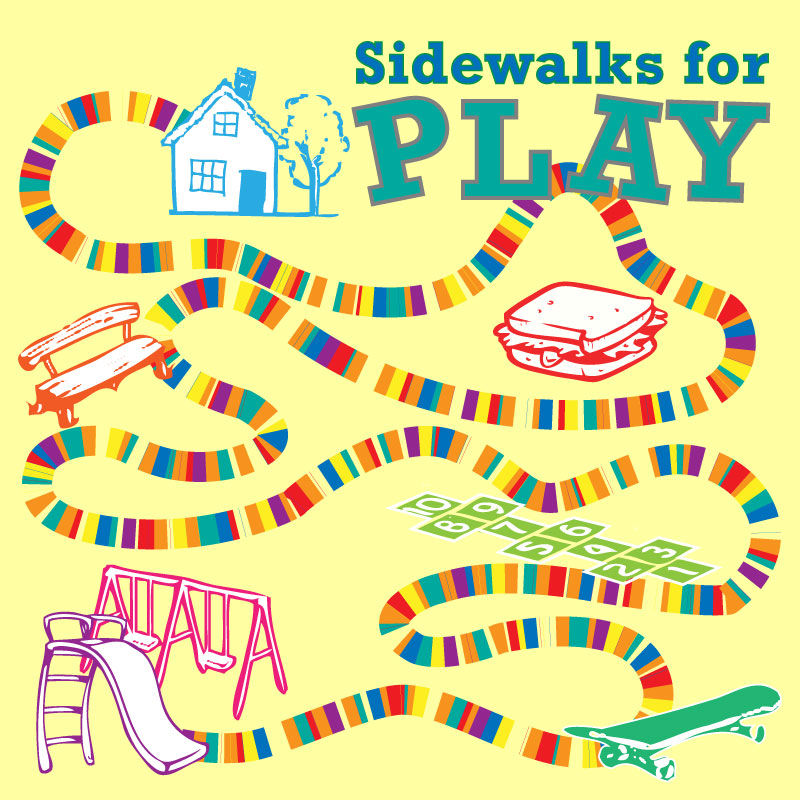If you live in a dense urban area and are on foot, the sidewalk is the indispensable way to get anywhere. Go to the corner store for a quart of milk? Take the sidewalk. Walk the kids to the neighborhood school or nearby park? Take the sidewalk. As conduits “from here to there,” sidewalks perform admirably. But why couldn’t they also be destinations in themselves: places for neighbors to gather, children to play, families to picnic?
As communities everywhere struggle to pay for and maintain parks, it would be cost effective to retrofit our sidewalks into places for relaxation and play. A number of design strategies and installation techniques could completely transform the way people interact, socialize and reflect. For starters, families would be more inclined to enjoy leisure time together on and around sidewalks if kids had fun activities in which they could safely engage. Raised curbs for balancing, slate panels for drawing, pavement-imprinted riddles for solving, misting nozzles for cooling, and artist-designed hop-scotch patterns for inadvertent exercising are only a few of the possibilities. Furthermore, people of all ages could enjoy stepping blocks for hopping and sitting, benches and tables for lounging, playing chess or eating a sandwich. Considering the miles of sidewalks at varying widths that exist in any given city there are countless nooks and crannies in which we can use our imaginations to bring “play” to the urban scene, enhancing conduits by creating destinations.

